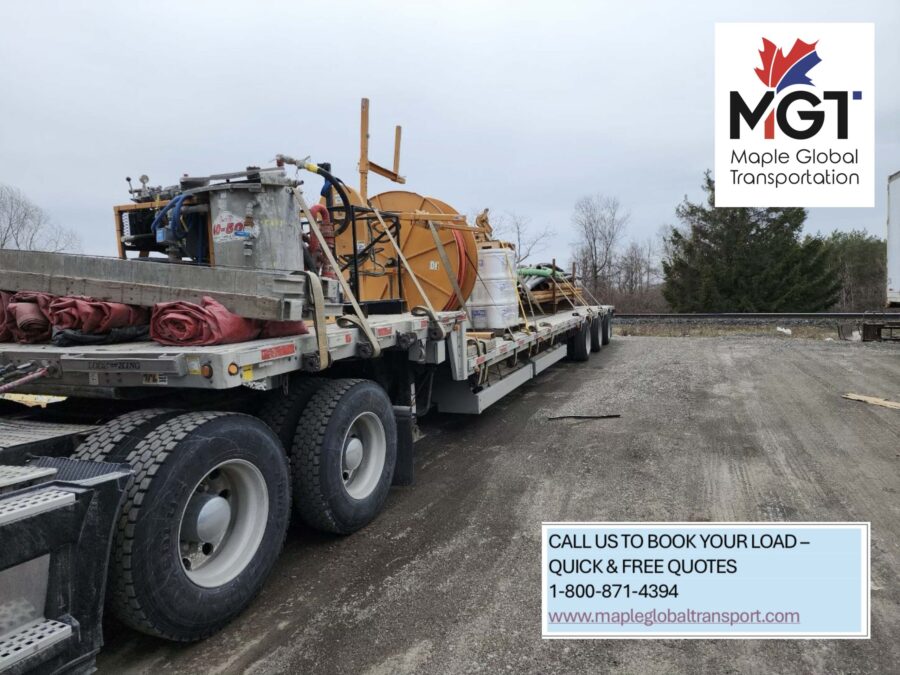In the heart of southwestern Ontario lies London, a city with rich history and an expanding construction industry. From commercial developments to residential projects and infrastructure upgrades, construction plays a pivotal role in shaping the landscape of London. Behind every construction project lies a vital component: flatbed transportation. In this post, we delve into the integral role flatbed transportation plays in facilitating construction activities in London.
The Foundation of Construction Logistics:
At the heart of every successful construction project lies a robust logistical framework, orchestrating the intricate dance of supplies, personnel, and equipment. Flatbed transportation forms the cornerstone of this logistical network, serving as the vital conduit that connects suppliers with construction sites. From the moment raw materials are sourced to the final delivery of finished products, flatbed trucks traverse the highways and byways, ensuring that construction projects have the necessary resources to thrive.
Hauling Heavy Loads:
Picture the scene: a towering crane arrives at a construction site, ready to lift the heavy beams that will form the skeleton of a new skyscraper. Behind this monumental moment lies the steadfast support of flatbed transportation. These specialized trucks are adept at hauling heavy loads, their sturdy frames and strategic loading configurations ensuring the safe and efficient transportation of oversized equipment. Without flatbed transportation, the monumental operations of construction that define our skylines would remain mere aspirations.

Transporting Construction Materials:
Steel girders, concrete slabs, and timber beams – these are the building blocks of progress, each requiring careful transportation to reach its destination. Flatbed trucks serve as the workhorses of material transport, navigating city streets and country roads alike to deliver their cargo. Through rain or shine, day or night, flatbed transportation ensures that construction sites remain well-stocked with the essential materials needed to forge ahead.
Efficiency and Timeliness:
In the fast-paced world of construction, time is of the essence. Delays can be costly, both in terms of finances and project timelines. Flatbed transportation offers a solution, with its reliability and efficiency ensuring that materials and equipment arrive at construction sites precisely when they are needed. Through meticulous planning and strategic coordination, flatbed transportation optimizes routes and schedules, minimizing downtime and river progress forward.
Supporting Infrastructure Projects:
As cities grow and evolve, so too does the need for robust infrastructure. Roadways, bridges, and tunnels form the arteries of urban life, facilitating commerce and connectively. Behind those monumental undertakings lies the logistical challenge of transporting the quantities of materials and equipment needed for their construction. Once again, flatbed transportation rises the occasion, providing the logistical backbone that supports the development of critical infrastructure projects.

Safety and Compliance:
Amidst the hustle and bustle of construction activity, safety remains paramount. Flatbed transportation companies adhere to stringent safety standards and regulatory requirements, ensuring that every load is transported with the utmost care and attention. From securing oversized loads to navigating challenging terrain, flatbed drivers undergo rigorous training to uphold safety protocols and mitigate risks, safeguarding both personnel and the public.
Conclusion
From hauling heavy equipment to delivering essential materials, flatbed trucks serve as the unsung heroes of construction logistics, driving progress with each mile they travel. As the construction industry continues to evolve and innovate, flatbed transportation remains steadfast in its commitment to supporting growth and development, ensuring that the skyscrapers of today become the landmarks of tomorrow.
